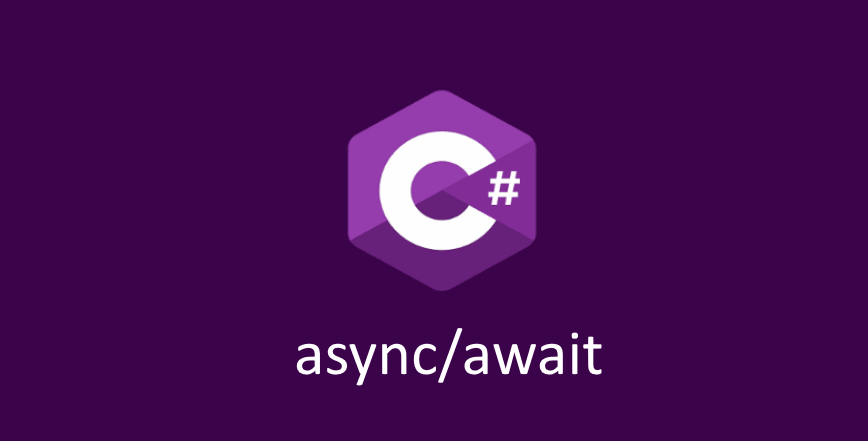Asynchronous Programming in .NET
Mohamed Kassem | July 08, 2021

What is Asynchronous programming ?
Imagine we have an application where user interacts with our application to load a certain file from disk. Now if the file is being rather big. So we want to indicate to our user that something’s going on. The scenario will be
- Show a loading indicator
-
Start asynchronous operation which mean that we can process something simultaneously to this loading time.
- Like read a large CSV file from disk
- Once file is loaded into memory, it will Count the rows
- Asynchronous operation completed
- Render the result on screen
- Remove loading indicator
So, Asynchronous programming means that we can do simultaneous processing, meanwhile the user is doing something in our application we can go a head and do other things that don’t interrupt user’s workflow.
It also mean that when we are doing an asynchronous operation, we get notified about the result when that is available to us (when the processing id done).
Asynchronous programming is not parallel programming
Parallel programming is generally used to conquer a bigger problem, and chop that into smaller chunks. the above scenario will be the same but will different in read CSV file and Count the rows
- Like read a large CSV file from disk
- Process rows in parallel, which mean will do something with each row in parallel instead of just counting the amount of rows.
- Asynchronous operation completed
We can also combine parallel programming together with asynchronous programming to make our application even better. This is done in most applications.
Why using Asynchronous programming
- To avoid unreliable applications
- Build faster applications
- Today, all APIs and applications rely on asynchronous programming
Applying Asynchronous programming in .NET 4.0 using Task.Run()
by using Task Parallel Library we can write concurrent and asynchronous code.
To do that using Class Task which represents an asynchronous operation for example:
var task = Task.Run(() => {
// do something
// if returning something
});
task.ConfigureAwait(true)
.GetAwaiter()
.OnCompleted(() =>
{
// do something
// if returning something, you will find it in `task.Result;`
});You should not warp code that could be synchronous inside Task.Run().
Applying Asynchronous programming in .NET 4.5 using Async and Await.
async and await keywords make your code cleaner and more understandable.
For applying asynchronous operations
- First write
asynckeyword in method signature/declaration. Which indicate the compiler that this method has the capability of running asynchronous code. - Second write
awaitkeyword in front of any task to make sure that all the code after this is executed in a continuation when the asynchronous operation is completed.
for example
private async Task<string> LoginAsync()
{
await Task.Run(() => {
Thread.Sleep(2000);
return "Login Successful!";
});
}
private async Task LoginButton_Click(object sender, RouteEventArgs )
{
var result = await LoginAsync();
// it will not execute this line untill the asynchronous is completed
LoginButton.Content = result;
}if you have more than one task and want to run them all at the same time. you can use await Task.WhenAll(tasks) method. For example
private async Task<string> LoginAsync()
{
var loginTask = Task.Run(() => {
Thread.Sleep(2000);
return "Login Successful!";
});
var logTask = Task.Delay(2000); // Log the login
var purchaseTask = Task.Delay(1000); // Fetch purchases
// this will execute all task at the same time, don't need to await any of them
await Task.WhenAll(loginTask, logTask, purchaseTask);
return loginTask.Result;
}For ASP.NET web applications it might be a best practice to do **ConfigureAwait is false, the reason for that is that it’s going to become a lot **quicker, because it *pick one of the threads in the thread pool and use whichever one is available\* and not try to get back to the one is used first.
using (var client = new HttpClient())
{
var httpMessage = await client.GetAsync("https://blog.kassm.me/rss/").ConfigureAwait(false);
var content = await httpMessage.Content.ReadAsStringAsync().ConfigureAwait(false);
return content;
}With ASP.NET Core setting ConfigureAwait is false doesn’t have any effects on code running. Because there is no longer a synchronization context in ASP.Net Core, you no longer need to include ConfigureAwait(false) in ASP.Net Core, but including it does no harm.
To do work concurrently
You start a task and hold on to the Task object that represents the work. You’ll await each task before working with its result.
- The first step is to store the tasks for operations when they start, rather than awaiting them
- Move these tasks before awaiting invokes like the following
static async Task Main(string[] args)
{
// they will run in parallel
Task<string> result1Task = DoWork1Async();
Task<string> result2Task = DoWork2Async();
// Await them now.
Console.WriteLine(await result1Task);
Console.WriteLine(await result2Task);
Thread.Sleep(2000);
var result3 = 4 + 5;
Console.WriteLine(result3);
}
public static Task<string> DoWork1Async()
{
var result = Task.Run(() =>
{
Thread.Sleep(5000);
return "Finish work 1";
});
return result;
}
public static Task<string> DoWork2Async()
{
var result = Task.Run(() =>
{
Thread.Sleep(5000);
return "Finish work 2";
});
return result;
}Next Step ⇒ read this article